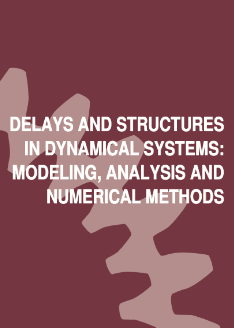
DELAYS AND STRUCTURES IN DYNAMICAL SYSTEMS: MODELING, ANALYSIS ANDMODELING, ANALYSIS AND NUMERICAL METHODS: NUMERICAL METHODS
Udine, Italy. November 20-24, 2023.
Delays and structures pervade the realistic modeling of populations and their investigation under the paradigm of dynamical systems.
They prove to be essential also in control and related fields, where modeling through delay functional or partial differential equations has become increasingly fundamental.
The inclusion of past history in the time evolution and the introduction of structuring variables add non-trivial complexities with respect to ordinary systems, balancing the undoubted advantage of dealing with more realistic models. Equations involving time delays and structures both generate dynamical systems of infinite dimension, asking for advanced methods in the mathematical analysis and the numerical treatment. Finally, understanding stability of equilibria and other invariants is crucial and often requires sophisticated numerical and computational approaches. The school brings together strong and up-to-date contributions in population dynamics and related fields as far as delays and structures give fundamental tools for the realistic modeling of, e.g., the transmission of an infectious disease, the evolution of a resource-consumer scenario or the competition in a predator-prey system. Numerical and computational expertise is also offered, providing reliable approaches towards a practical and accessible analysis. The course aims at discussing the most recent advances in the different contexts of the relevant mathematical analysis (functional aspects of semigroup theory); the concerned modeling approaches (delay differential, renewal and partial differential equations of evolution type, including multi-structured, neutral and state-dependent equations); the numerical and computational techniques to operate with infinite-dimensional dynamical systems (simulation, stability, bifurcation).
 SICC
SICC

